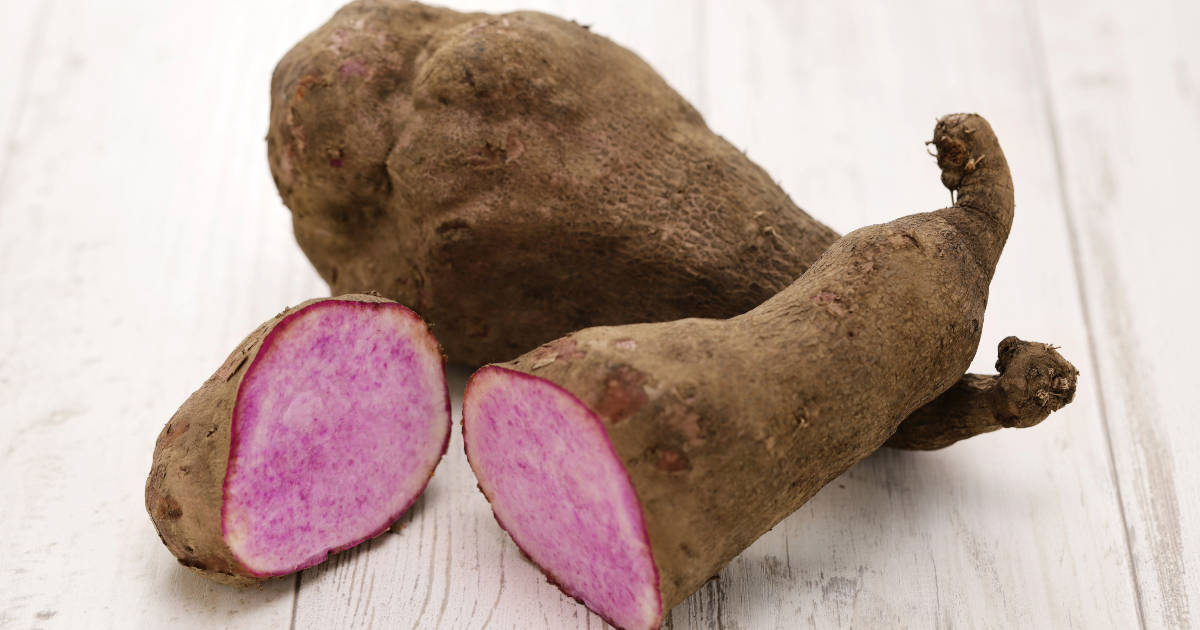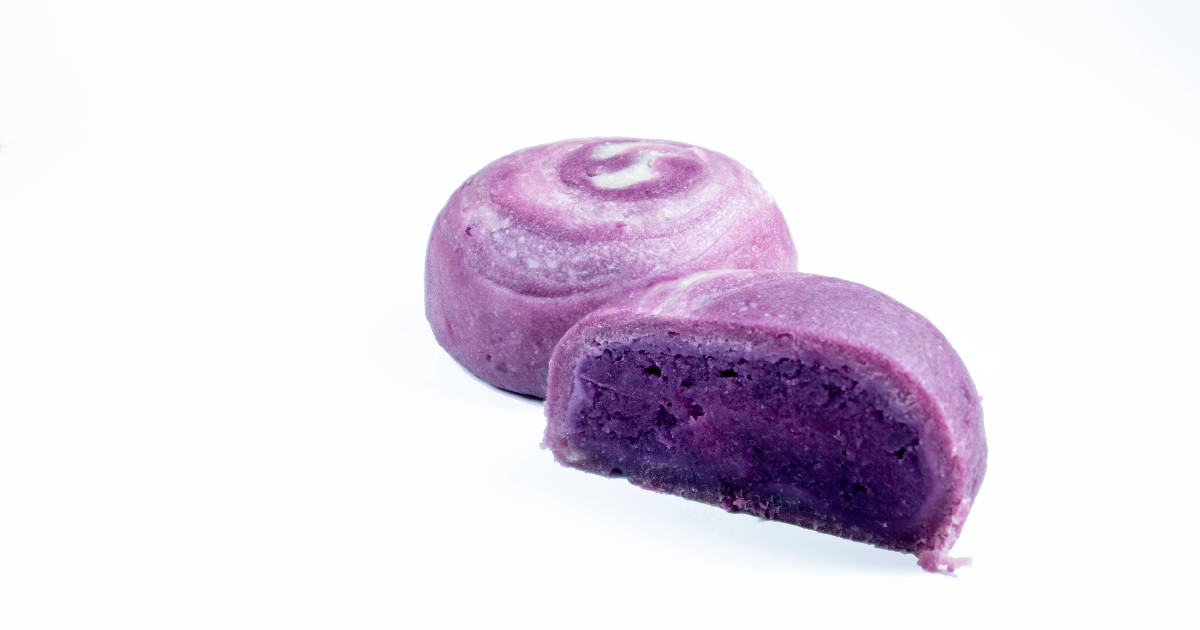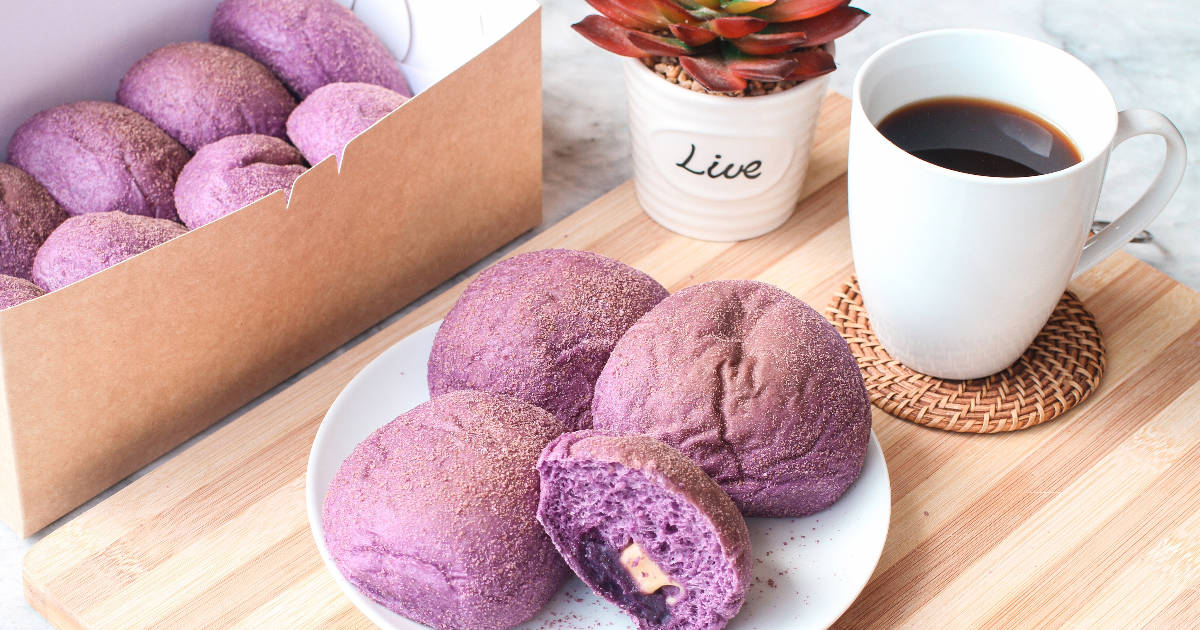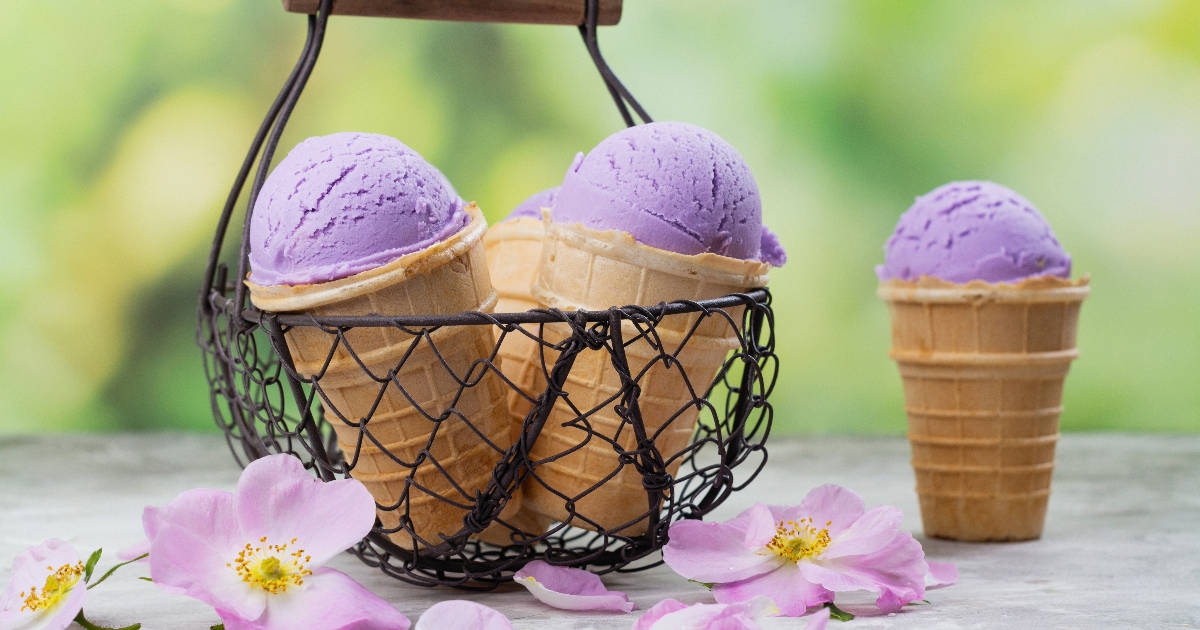Ube powder is a unique ingredient that has been growing in popularity in recent years. This vibrant purple powder is made from ube, also known as purple yam, and lends a sweet nutty flavor and beautiful color to both sweet and savory dishes.

Ube is a starchy root vegetable that is a staple in many Southeast Asian cuisines, especially Filipino cuisine. The origins, taste, preparation, and uses of ube powder are fascinating for adventurous home cooks and foodies alike. Keep reading to learn all about this colorful powder and how to use it to make stunning dishes!
What is Ube?
Ube, sometimes spelled ubi, is the Filipino word for purple yam. It is a tuberous root vegetable that is bright purple on the outside and varies from white to deep purple on the inside. It has a rough, gnarly exterior and purple flesh similar to that of Okinawan sweet potatoes.
Ube has a sweet, nutty vanilla-like flavor that is less sweet than that of sweet potato. The taste and texture are often likened to coconut. The enchanting purple color comes from the antioxidant anthocyanins.
Some key facts about fresh ube:
- Native to Southeast Asia, especially the Philippines
- Alternate names: purple yam, water yam, winged yam
- Rough and bark-like purple skin
- White to lavender flesh
- Sweet nutty taste like coconut
Key Takeaway: Ube is a purple yam from Southeast Asia with a sweet nutty flavor that makes it perfect for desserts.
The Difference Between Ube and Taro
Ube is sometimes confused with taro root, but they are two distinctly different root vegetables. Both have rough bark-like skin and purple flesh, but taro is larger with a more subtle nutty flavor.
Taro flesh is white with purple or pink speckles throughout, while ube flesh is solid lavender. Taro has an earthier flavor than the sweet vanilla-coconut notes of ube.
Both need to be boiled or cooked fully before eating to remove toxins. Taro is better for savory dishes, while ube is preferred for sweet dessert recipes.
How to Cook Fresh Ube

Fresh ube can be difficult to find in grocery stores in the U.S., but specialty Asian food stores may carry it. When working with fresh ube, keep the following preparation tips in mind:
- Wash thoroughly and peel the rough skin
- Chop the peeled ube into similar-sized pieces
- Boil or roast for 25-30 minutes until fork tender
- Mash cooked ube and use it in recipes
Fresh ube should always be cooked fully before eating to remove potential toxins found in raw ube. Once cooked, the tender purple flesh can be used in both sweet and savory dishes ranging from ice cream to soups.
Introducing Ube Powder
Ube powder is made from fresh purple yams. The ube is peeled, boiled, mashed, dehydrated, and ground into a fine powder. The powder has an intense ube flavor and vibrant purple color.
It must be reconstituted with liquid before being used in recipes. Ube powder thickens and enriches recipes with its signature color, taste, and texture.
Benefits of ube powder:
- Convenient substitute for hard-to-find fresh ube
- Adds natural purple color
- Provides signature ube flavor
- Easy to store
- Shelf-stable
- Versatile ingredient
Culinary Uses for Ube Powder
From sweet to savory dishes, ube powder is extremely versatile in the kitchen:
Sweet Recipes

Ube powder is right at home in desserts and sweets:
- Cakes, cookies, muffins, donuts, cupcakes
- Ice creams, gelato, frozen yogurt, popsicles
- Puddings, custards, flan
- Sweetbreads and pastries
- Jams, preserves, syrups
- Smoothies, milkshakes
- Hot chocolate
Savory Recipes

A little goes a long way when adding ube powder to savory dishes:
- Soups, sauces, stews
- Risottos, rice dishes
- Mashed potatoes
- Baked goods like bread
- Dips and dressings
Start with 1-2 teaspoons of ube powder in savory recipes for a hint of color and flavor. The powder dissolves easily into liquids.
How to Use Ube Powder
Using ube powder is simple. Follow these tips when incorporating it into your cooking:
- Start with a small amount and adjust to your preference
- Whisk or blend powder into liquid ingredients
- Hydrate in milk, coconut milk, cream, etc.
- Reconstitute in water for drinks
- Add to batter and dough
- Mix into frostings, glazes, and fillings
Ube powder requires some moisture to dissolve and properly hydrate. The reconstituted paste can then be used to color and flavor recipes across the culinary spectrum.
Ube Powder Recipes
Here are some amazing ways to use ube powder at home:

Ube Waffles
Jazz up breakfast with purple ube waffles. Whisk ube powder into the batter before cooking for vibrant color and flavor. Top with whipped coconut cream and fresh fruit.
Ube Buttercream
This striking frosting is perfect for cakes and cupcakes. Beat ube powder with butter, powdered sugar, and milk for a smooth, spreadable buttercream.
Ube Ice Cream
Level up your homemade ice cream with ube powder. Infuse milk or cream with the powder before churning for a delicious ube ice cream.
Ube Cheese Bread
Incorporate ube powder into doughs like this moist ube cheese bread. Bake until golden brown and enjoy the sweet nutty aroma.
Ube Milk Tea
Trendy bubble tea gets an ube twist. Mix ube powder with simple syrup then blend into your favorite milk tea. Top with tapioca pearls.
Where to Buy Ube Powder
Ube powder can be found at:
- Specialty Asian food stores
- Filipino grocery stores
- Online retailers like Amazon
- Baking supply stores
Leading brands to look for include Giron Ube Powder, Inah's, and Señorita. When buying, look for 100% real ube as the single ingredient.
Store ube powder in an airtight container in a cool, dry place away from sunlight. It will keep for 9 months to 1 year this way.
Ube Powder vs. Ube Flavoring
Two common ube products you may come across are ube powder and ube flavoring:
- Ube powder - Made from real ube. Provides color, flavor, and texture. Must be reconstituted before using.
- Ube flavoring - Artificial ube extract. Only provides ube flavor, not color or texture.
Ube powder is a natural way to add this Filipino ingredient to your cooking. Ube flavorings have an artificial ube taste without the visual impact.
FAQ
How much ube powder should I use?
Start with 1-2 teaspoons of ube powder per recipe, adjusting up as desired. It has a concentrated flavor so a little goes a long way.
What does ube powder taste like?
Ube powder provides a sweet, nutty flavor similar to coconut. It also lends subtle vanilla notes.
Is ube powder safe to eat raw?
No, ube powder should always be fully cooked or dissolved into liquid before eating. Raw ube contains toxins that are removed during cooking.
Can I substitute taro for ube powder?
It's best not to substitute taro for ube powder. Although both are purple root vegetables, they have distinctly different flavors.
Is ube powder gluten-free?
Yes, ube powder is naturally gluten-free. As always, check labels for gluten-free certification if you have celiac disease or a gluten sensitivity.
Conclusion
With its fascinating color and sweet nutty coconut flavor, ube powder is an exciting ingredient that home cooks must try.
Look for ube powder at specialty grocery stores to bring the essence of Filipino ube yams into your kitchen. Start with small amounts to get a feel for its vivid purple color and vanilla, nutty taste.
Ube powder can transform familiar desserts like ice cream and cakes as well as spice up savory dishes. Harness its coloring power in frostings, doughs, drinks, glazes, and more for menus that pop.
Let ube powder inspire you to get creative in the kitchen with this unique and versatile ingredient!

